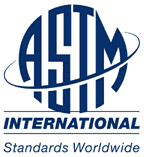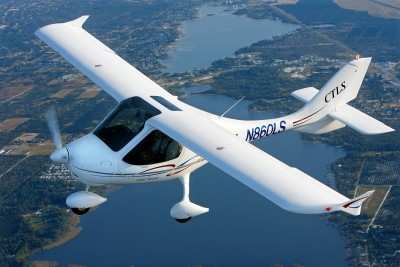Fri, Oct 28, 2011
Light Sport Manufacturers Must Comply With New Standards By
November 12
On July 29, 2011, the FAA announced in the Federal Register the
availability of ASTM International standard F2746–09,
Specification for Pilot’s Operating Handbook (POH) for Light
Sport Airplane, as well as ASTM F2245-10c, Specification for Design
and Performance of a Light Sport Airplane. Manufacturers of fixed
wing light sport aircraft are required to revise their POHs for new
production airplanes in accordance with these new standards by no
later than Nov.12, 2011.

ASTM F2245 and ASTM F2746 are under the
jurisdiction of Subcommittee F37.20 on Airplane, part of ASTM
International Committee F37 on Light Sport Aircraft. F37.20
currently maintains six published standards related to
airplanes.
One of the changes in ASTM F2245-10c is the requirement to use
either ASTM F2746-09 or the format and content requirements of
General Aviation Manufacturers Association (GAMA) Spec 1 for POHs
supplied with light sport aircraft. A key enhancement introduced by
this change is the reorganization of LSA POH content to align with
that found in larger general aviation aircraft. This enhances
safety because pilots transitioning to larger aircraft from LSA or
from larger aircraft to LSA will be presented with a POH that has
an identical organization. Other enhancements include better
transfer of needed information for non-OEM aircraft equipment such
as avionics and engines, clarified change control requirements,
more accurate airspeeds and more detailed content throughout.

A previous revision to the ASTM F2245
standard also included a new section addressing airspeed indicator
markings. While not required to upgrade their previously produced
aircraft to the new POH requirements, LSA manufacturers are
encouraged to review the previously revised airspeed indicator
marking and new POH requirements with regard to their previously
produced aircraft. If necessary, manufacturers are encouraged to
provide customers of those aircraft with updates to ensure that
they have accurate determination of airspeed data and adequate
presentation of that data in their POHs and airspeed
indicators.
The accepted changes in these standards are part of an ongoing
effort by ASTM Committee F37 to enhance the content of the
standards based on feedback from industry, FAA, the National
Transportation Safety Board and other worldwide civil aviation
authorities.
“The changes in these standards, along with forthcoming ones,
are demonstrating the ability of the consensus standards process to
rapidly respond to the needs of the light sport aircraft industry,
reducing the time for safety enhancements to reach consumers on new
production aircraft,” says Adam Morrison, Streamline Designs
LLC, F37.20 chairman and vice chairman of F37.
More News
Witness Reported The Airplane Was Flying Low And Was In A Left Bank When It Struck The Power Line Analysis: The pilot was on final approach to land when the airplane collided with >[...]
How To Get A Story On Aero-TV News/Feature Programming How do I submit a story idea or lead to Aero-TV? If you would like to submit a story idea or lead, please contact Jim Campbel>[...]
From 2012 (YouTube Edition): A Segment Of The Sport Aviation World That Truly Lives "Low And Slow" Pity the life of ANN's Chief videographer, Nathan Cremisino... shoot the most exc>[...]
Aero Linx: International Business Aviation Council (IBAC) IBAC promotes the growth of business aviation, benefiting all sectors of its industry and in all regions of the world. As >[...]
Execute Missed Approach Instructions issued to a pilot making an instrument approach which means continue inbound to the missed approach point and execute the missed approach proce>[...]
 NTSB Final Report: Cozy Cub
NTSB Final Report: Cozy Cub ANN FAQ: Contributing To Aero-TV
ANN FAQ: Contributing To Aero-TV Classic Aero-TV: Seated On The Edge Of Forever -- A PPC's Bird's Eye View
Classic Aero-TV: Seated On The Edge Of Forever -- A PPC's Bird's Eye View ANN's Daily Aero-Linx (04.29.25)
ANN's Daily Aero-Linx (04.29.25) ANN's Daily Aero-Term (04.29.25): Execute Missed Approach
ANN's Daily Aero-Term (04.29.25): Execute Missed Approach




